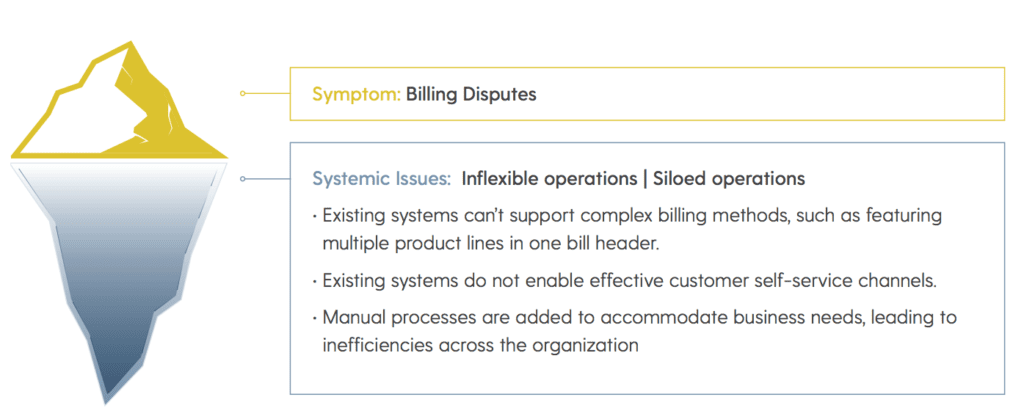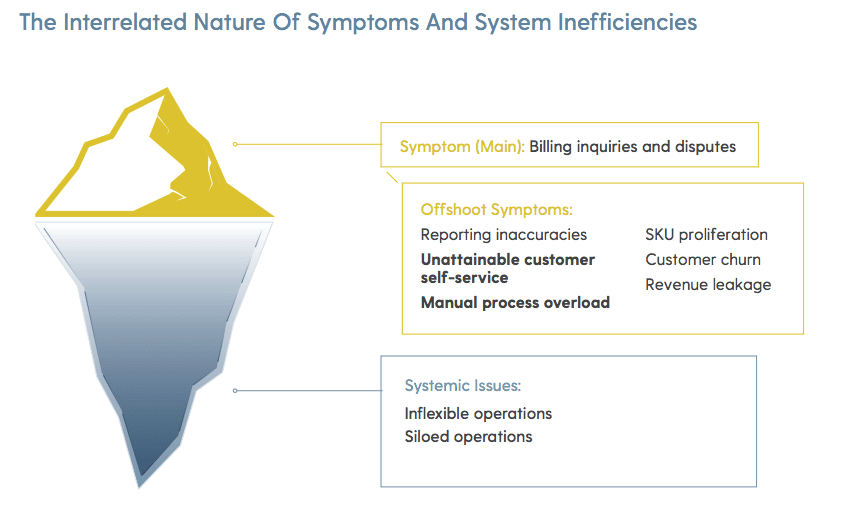 For many organizations, the need to optimize front and back office operations—a process that we collectively refer to as lead-to-revenue operations—is becoming increasingly more important as companies shift to a recurring revenue model.
For many organizations, the need to optimize front and back office operations—a process that we collectively refer to as lead-to-revenue operations—is becoming increasingly more important as companies shift to a recurring revenue model.
In a recurring revenue model, organizations must sell, serve, deliver and account in a unified way, with fully connected people, processes, technologies and systems, including CPQ, CLM, Billing, ERP, Licensing and Provisions. When these systems are not unified, friction occurs—both from the point of view of the business and the customer. The resulting issues, such as an onslaught of billing disputes or a slow month-end close, are obvious and urgent, prompting many organizations to take immediate action.
However, these pain points are often just the proverbial tip of the iceberg—surface level issues that foretell of deeper, more substantial challenges. It’s what’s underneath—operational inefficiencies and foundational shortcomings—that stymie growth, profitability and agility. For organizations that have embraced a recurring revenue model, this is where they must focus, transforming systems, processes and operations to unite the lead-to-revenue lifecycle.
The difference between treating symptoms and transforming systems
In order to effectively solve issues at the core level, companies must first differentiate between a surface-level challenge and a deeper systemic issue.

6 systemic issues that stall growth
1. Inadequate and capability-deficient systems: Underlying systems investments that are not designed for a recurring revenue model and have components that do not provide frictionless expansion and renewals, which may erode the customer experience
2. Siloed functions and operations: Disconnected processes and systems across the front and back office and/or processes and systems that are not organized around the customer
3. Inflexible operations: Systems that lack agility due to gaps in technology or digital immaturity
4. Lethargic system performance: Dated and inflexible systems that cannot accommodate modern business needs
5. Go-to-market motion and packaging: Insufficiently defined processes and systems that cannot support a client-centric GTM strategy
6. Inability to Scale: Cannot support the sheer volume of transactions that occur in a recurring revenue model
With this list in mind, it is possible to see how surface-level symptoms that erode the customer experience are often an outgrowth of systemic issues. In many cases these obvious challenges can also be traced back to specific inefficiencies, gaps or redundancies within the lead-to-revenue architecture—or an architecture that is not organized around the customer’s needs.
For example, a client who is experiencing an uptick in billing inquiries and disputes may have the instinct to solve this issue through a new billing tool. However, in looking at the graphic above, we can see that billing issues are a symptom of broader organizational challenges.
To truly solve this issue, the business must examine deeper issues and shortcomings within the leadto-revenue cycle, asking questions such as:
• What are customers disputing?
• Why aren’t these needs being addressed through self-service channels?
• Are existing tools and systems capable of adapting to serve this new need?
• Can our product catalogue be simplified to alleviate or eliminate errors?
In this way, it is possible to trace the symptom back to deeper, systemic shortcomings, such as inflexible or siloed operations.

A closer look: The relationship between symptoms and systemic issues
In looking at the above graphic, it is also possible to see how one symptom, such as billing disputes, can possibly generate other issues or exacerbate underlying inefficiencies.
For example, many companies process billing disputes manually, which only adds to the core challenge of manual process overload. It may also prompt system customizations in order to automate processes, which may further hinder the overall efficiency of the system. All of this may require more manpower, which may increase headcount. Finally, the mere act of disputing a bill will erode customer satisfaction and loyalty, potentially leading to customer churn or revenue leakage.
 Perhaps the good news is that many of the surface-level symptoms are a product of the same systemic shortcoming—meaning that solving underlying issues could help substantially clear multiple symptoms or better position the organization for progress.
Perhaps the good news is that many of the surface-level symptoms are a product of the same systemic shortcoming—meaning that solving underlying issues could help substantially clear multiple symptoms or better position the organization for progress.
Solving systemic issues through a connected lead-to-revenue architecture
What companies need to keep in mind is that systemic issues arise from gaps, redundancies and shortcomings within the lead-to-revenue architecture. Uniting people, processes and technologies across the front and back office will be the key to eliminating pain points within the recurring revenue model.
Key considerations:
1. Start with strategy. Formulate a comprehensive strategy that will create value for the customer and enable recurring revenue growth. While technology will play a role in realizing this vision, the tools and systems are not the solution itself, but an enabler of the overarching strategy.
2. Establish customer lifetime value as the gold-star metric. Look beyond the initial sale and take a broader, long-term view of the customer relationship. This approach links sales and support with value creation— and constantly reevaluates how the strategy must change as a result of the customer’s evolving needs.
3. Create a connected lead-to-revenue architecture. Symptoms of a disconnected lead-to-revenue architecture may present differently, but the solution remains the same. A recurring revenue model requires businesses to unite processes, technologies and people to serve an ongoing, continuous customer relationship, as opposed to a traditional one-time transaction.
4. Maintain flexibility for the future. Organizations should design to meet their current needs while recognizing that those needs will change over time. The solution must be flexible and scalable, serving the needs of today and tomorrow.








